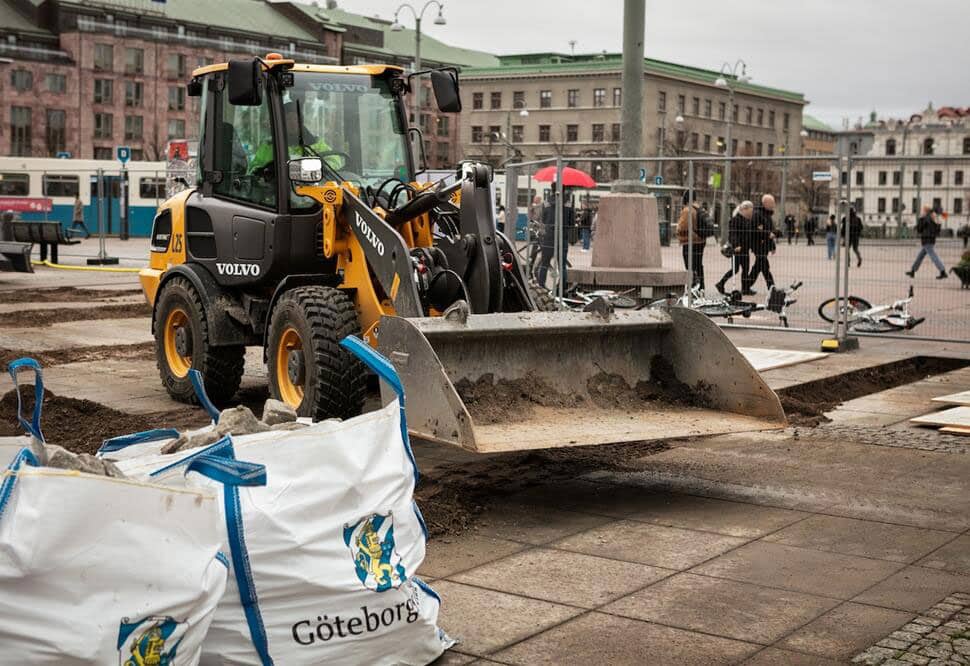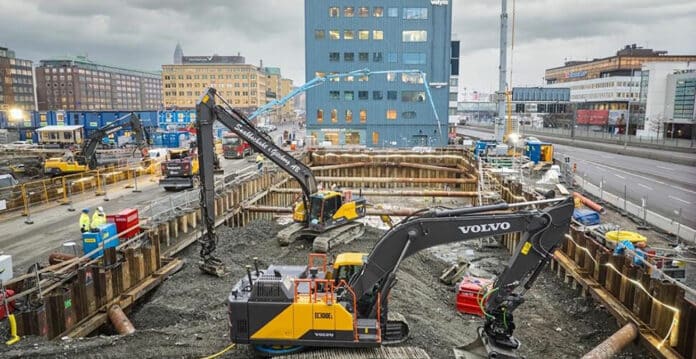Societies today are moving towards more sustainable city planning. Fossil-fuel-free construction is a crucial element in achieving national and global climate, environment, and air quality goals. The electrification of the construction sector will greatly reduce greenhouse gas emissions, noise pollution, and other harmful emissions, contributing to sustainable community building.
As the demand for emission-free construction contracting and electric machines grows, collaboration between all players across the value chain becomes increasingly important to ensure that the infrastructure is suitable for the transition. This creates new challenges for the energy supply and electrical system, among other areas, which need to be addressed to support a sustainable future.
A multi-partner study, “Electric Worksite,” has mapped the infrastructure needs for electric machines through testing at real-life worksites in Gothenburg, Sweden. The project aims to bring various stakeholders together to explore the possibilities and requirements of using electric equipment in urban settings.
The project has recently shared its final results, which were focused on a comprehensive understanding of the system perspective. They tested electric machines, energy storage solutions, and charging infrastructure in different urban sites to gain insights into the diverse needs across interconnected technical and organizational systems.
The tests were carried out in real-life construction sites with electric-powered wheeled and crawler excavators, wheel loaders, and load carriers, weighing between 3.5-30 tons. Some of them were both battery-powered and others cable-connected.

The conclusions of the study are quite promising, especially the fact that electric construction machines can perform the same work to the same standard as fossil-fueled variants in urban construction projects. Also, workers in and around electric machines experience several positive effects in the handling of machines and the working environment.
The success of electrification is based on foresight, planning, and flexibility. New power supply requirements are solved based on machine type and available electricity, such as electrical cabinets, mobile charging stations, cable-connected machines, and potentially also energy storage units. End customers need to be made aware of new opportunities and challenges with electric machines, as well as of existing business conditions and contracting requirements toward contractors and subcontractors.
Volvo CE is one of the collaborators who has played a key role in the research project, overseeing the tests and offering electric machines in different sizes and models. Moreover, they have provided technical solutions for charging, including mobile energy storage and cable management systems.
“Electric machines are already available on the market and performing well, but the challenge can often be how to establish a reliable supporting infrastructure. This project confirmed that when all actors in the value chain around a construction site collaborate, both from the public and the private sector, we solve the infrastructure around it. In all tests, regardless of application and location, the electric machines performed as well as, if not better than, equivalent models with combustion engines, but without harmful emissions and disturbing noise”, said Bobbie Frank, research leader at Volvo CE.
Municipalities and government bodies are actively promoting sustainable practices. By setting requirements for emission-free vehicles and machinery and establishing clear development goals, they can drive the transition towards a greener future. The City of Gothenburg was keen to be involved in this project, seeing that accelerating electrification within construction has many benefits.
For the construction contractor NCC, the Electric Worksite has meant evaluating opportunities and challenges with electrification and other value chain actors.
“Once again, we can conclude that the most important takeaway is that we need to get involved early in the project to plan for electrification – because the opportunities to influence emissions are greatest in the planning stage. Increased competence is also needed throughout the value chain to scale up the use of electric construction machines and vehicles. We also need electric machines to be demanded in the contracting by customers, and that they set requirements that drive the development forward,” says Pernilla Löfås, sustainability manager, NCC Infrastructure.
